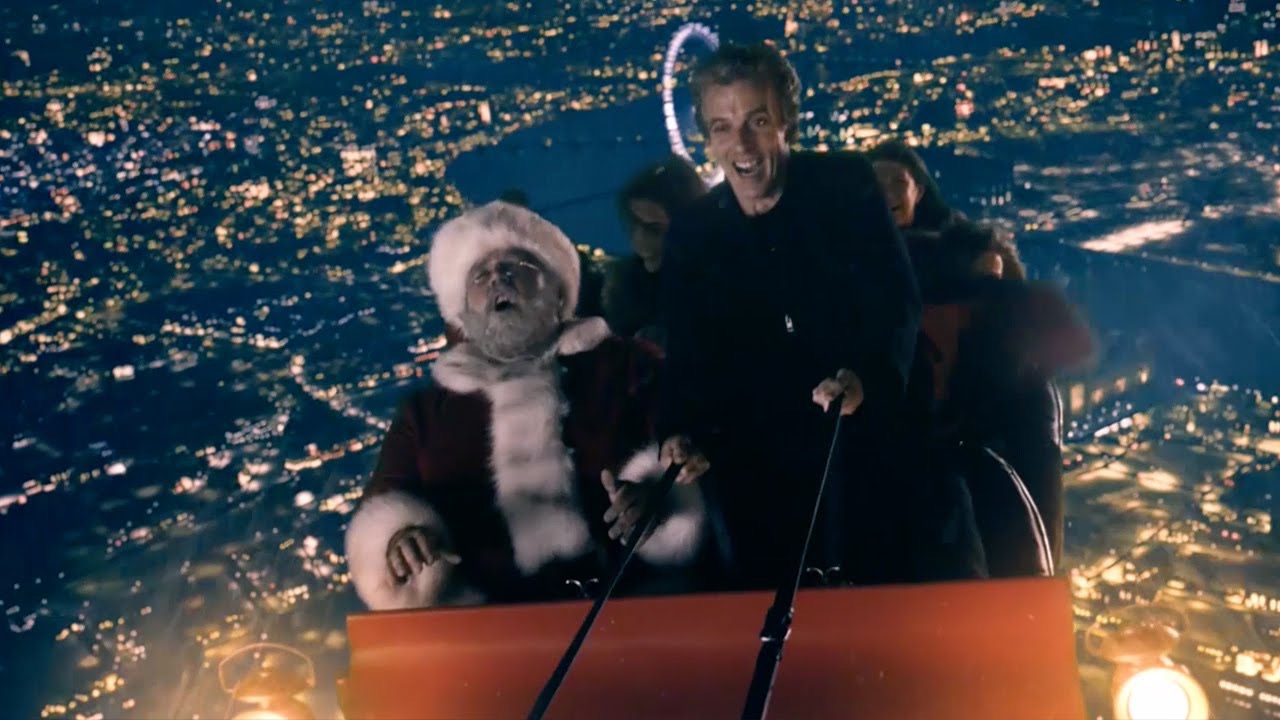KILL THE MOON
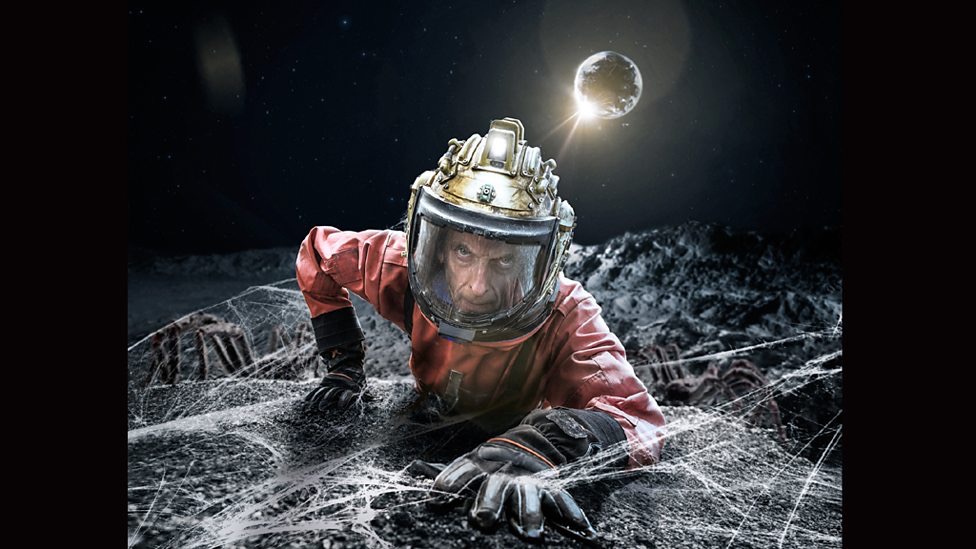
THE HOLLYWOOD NEWS
Overall, it seems that Moffat and Co may have their first Capaldi-classic on their hands with one of the most terrific, tense and terrifying stand-alone episodes to hit our screens since The Waters of Mars (and maybe even Silence in the Libray).

CULTBOX
‘Kill the Moon’ is ... a high point for the season so far... Steven Moffat calls this ‘proper drama’ and he’s not wrong. It’s proper drama, proper old school sci-fi, and proper scary. It is also that rare thing in Doctor Who: completely unpredictable.

DEN OF GEEK
Brilliant. We may as well get to the point quickly. Kill The Moon is brilliant.
It's the first Doctor Who story to be penned by Peter Harness and the first Doctor Who story to be directed by Paul Wilmshurst. Both leave an indelible mark on Kill The Moon, that makes you wish that Steven Moffat had them on instant speed dial.
There are a few themes bubbling around, but a good chunk of Kill The Moon is spent just trying to scare the bejesus out of you. Turns out, Paul Wilmshurst is firmly schooled in his Alien boxset and fully understands that near-silence is eerier than lots of action. And if you've got any aversion to spiders at all, then Kill The Moon is likely to get very firmly under your skin. This is - if it pushes your buttons - a really creepy piece of work. It'd be remiss not to give a shout out to Murray Gold, whose score here is arguably the most unnerving he's ever done for Doctor Who. It's excellent work.
Even more than all of that, though, this is the episode this run that's most convincingly knitted together a monster and the longer character material. Primarily a standalone episode, Peter Harness nonetheless weaves in one or two crucial moments, and they feel seamless in the broader story that's being told.

Furthermore, with the usual acknowledgement that Peter Capaldi is excellent, the show in this case is utterly, utterly stolen by Jenna Coleman. Particularly in the last five minutes, she absolutely belts it out of the proverbial park, with an ending that can't help but have ramifications somewhere along the line.
It's barely worth hunting for the foibles in the case of Kill The Moon. It's tense, it's superbly executed, and it's the kind of episode that you skip to as fast as possible when you get the boxset home. Just don't watch it alone...
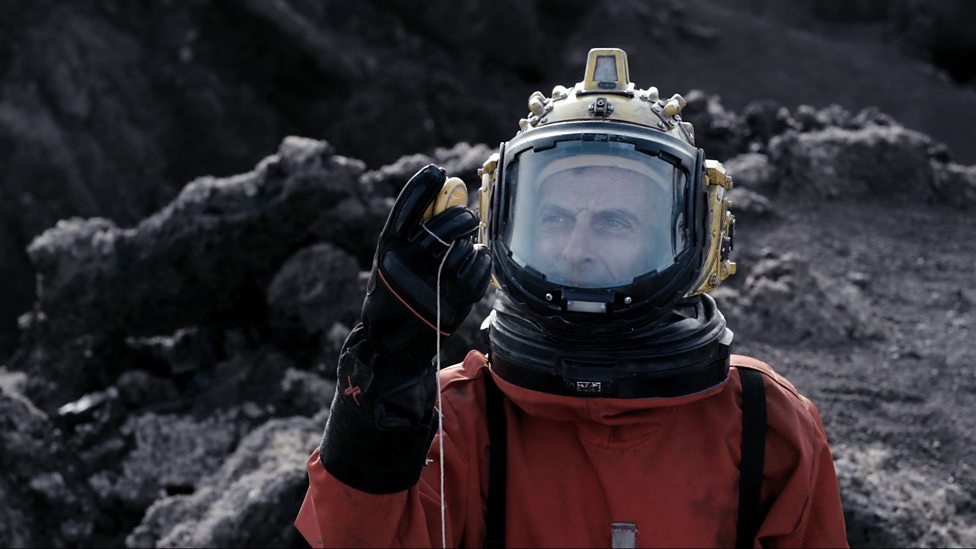
WIRED
Besides having a fantastic title evoking some weird hybrid of pulp science fiction and grindhouse cinema, Kill the Moon -- written by Peter Harness and directed by Paul Wilmshurst -- is the most dramatic episode of the season so far, with a major turning point for the increasingly uneasy relationship between Clara and the Doctor.
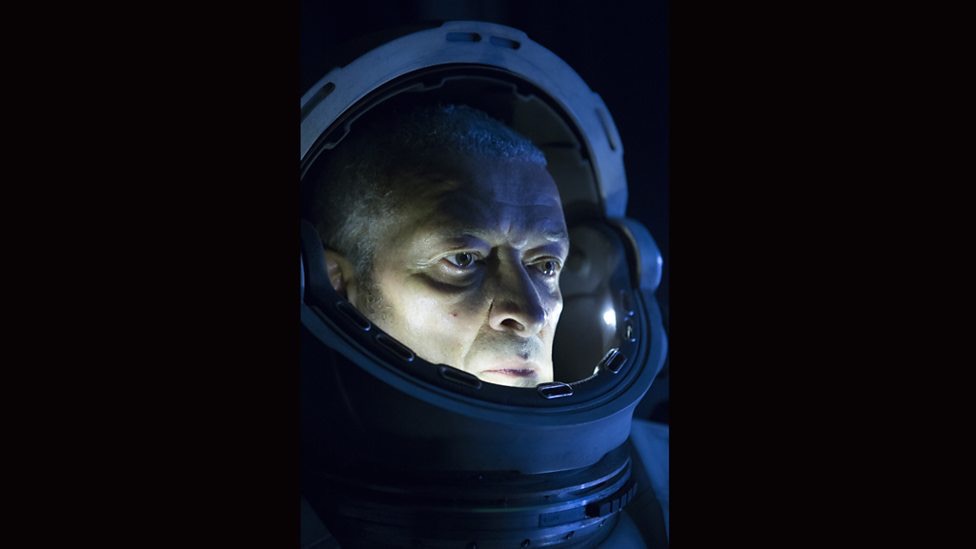
RADIO TIMES
Peter Harness’s first script for the programme is audacious, highly imaginative, and is well matched by Paul Wilmshurst’s supremely eerie, cinematic direction. (He’s new to Who too, and is back next week.)
Kill the Moon feels like and looks like proper hardcore science fiction, with solid space hardware (decrepit shuttle, derelict lunar base), impressive filming (the lunar landscape of Lanzarote), clapped-out astronauts (led by a lemon-sucking Hermione Norris), and terrifying creatures crawling and pouncing from the shadows.
Portentous dialogue, sharp direction, urgent music and a powerhouse performance from Peter Capaldi make this one of the defining moments of the season.
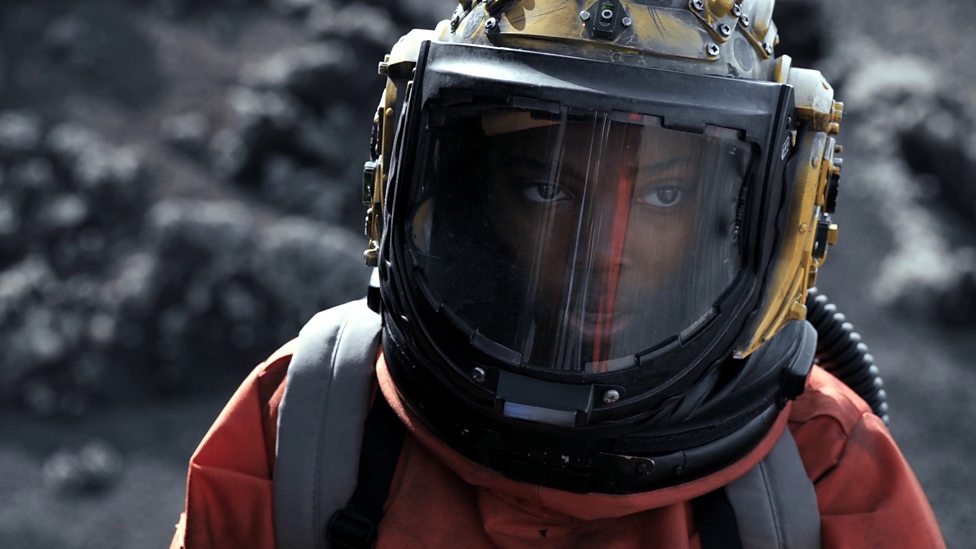
DOC OHO
I cannot in all good conscience provide a critical appraisal of this episode and neglect to discuss how stunning the production values are this week. I was quite taken aback by the quality of the production and how a trip to the moon was pulled off with cinematic visuals on a BBC budget. Whoever had the notion to use the volcanic plains of Lanzarote to double for the Moon's surface deserves a massive round of applause because the ensuing shots of the deserted landscape are just gorgeous. Doctor Who has presented quite a few versions of the Moon's surface and most of them have been pretty good but to have actors out on location in such vast space truly sells the notion of the unending desolation on the lunar surface.
It helps that the direction was a damn sight more imaginative than usual too. The dissolve of the moon into Clara's eye, connecting the orbiting body and the character in a visually arresting way provides the key to this episodes central dilemma without uttering a word.

I love how the episode shifts gears from your traditional Doctor Who spook fest (which the director pulled off with some gusto) to something much more dramatically substantial and philosophical. For once an episode tossed out the timey wimey clever cleverness and actually seemed to be about something. Whereas I have been slouching back and enjoying the show for what it is in season eight there were three times in Kill the Moon when I bolted upright on the edge of my seat and really paid attention (for the record it was the egg twists, the Doctor choosing to exonerate himself from responsibility and Clara's devastating accusations in the closing TARDIS scene). There is so much to admire about this episode; the stunning filming in Lanzarote, the arachnophobic’s nightmare, the standout performances of Capaldi and especially Coleman who truly proves her worth in the devastating climax.
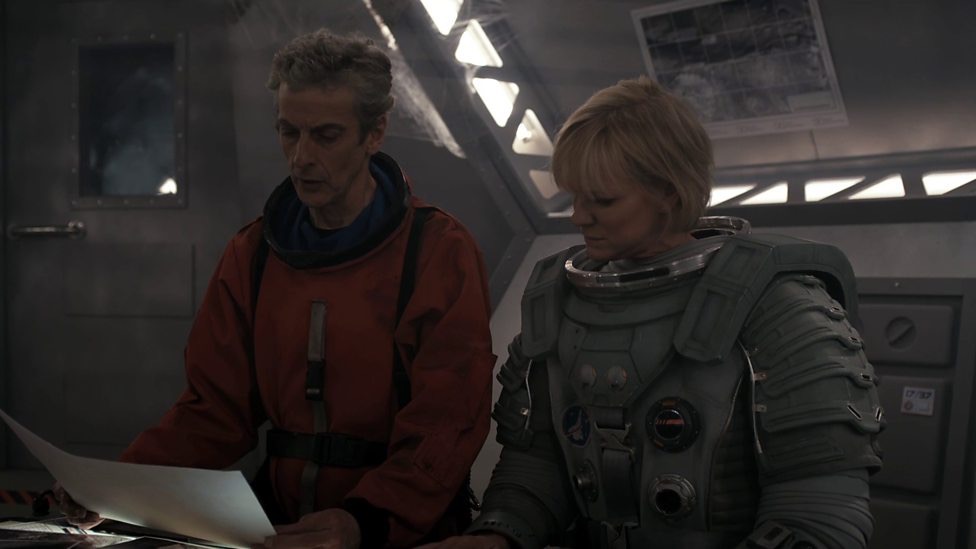
THE TELEGRAPH
Kill the Moon was an imaginative piece of storytelling that combined whimsy and action. Perhaps most importantly there was an honesty about it. It lacked the clever-cleverness that has marred recent episodes and proved how good Doctor Who can be when it simply tells a story.
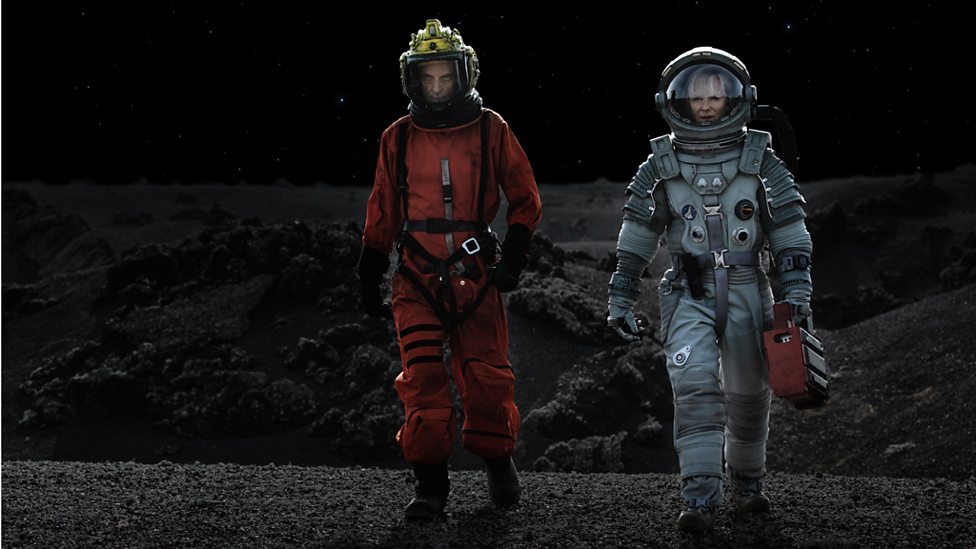
FORBES
... the opening fifteen minutes of ‘Kill The Moon’ returns Doctor Who to a treasured place in British television history ... namely behind the sofa. As an anthology show, Doctor Who can portray many stories, many genres, and place almost anything in front of the viewer.
It’s the scary stories that are remembered, the stories which are watched from ‘behind the sofa’ so it’s easy to hide. I’ve already looked at the parallels between Capaldi’s first series of Doctor Who with the first three seasons of Tom Baker’s Doctor under producer Phillip Hinchcliffe, and that influence continues here. The Hinchcliffe years went deep on horror, and the first acts of ‘Kill The Moon’ generated some of the scariest moments of Doctor Who. The tension, direction, and soundscapes created blended together perfectly.
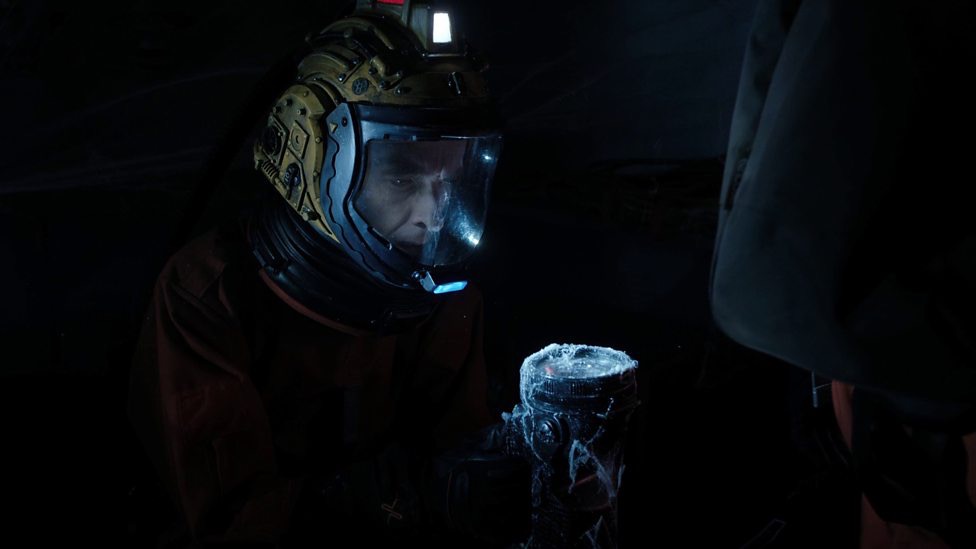
DEN OF GEEK
We've had some really creepy moments in Doctor Who this series … yet the space spiders - well, germs - that we get here are exceptionally well done. It helps that they play on a primal fear that many people have of arachnids, but also, debut Who director Paul Wilmshurst absolutely knows how to frame them.
In one central sequence, where the returning Courtney is all but stranded with a deadly spider, the Doctor, Clara and Lundvik, it could have been lifted straight out of an Alien film (from the first half of the movie boxset). The darkness, the lights shining through, the faces peering towards the camera: Wilmshurst fully understands that slowing things down and making little moments count is the key to crawling under people's skins.
And when he does cut to a close up, and demonstrates the spider's tip of the hat to Giger's xenomorphs as it bares its teeth, a few backsides around the world will have leapt off their cushions. Ours certainly did. Dripping with tension and drenched with atmosphere, this is modern Who working with the claustrophobia of the old days. It's hard to think of many other Saturday night shows that could deliver tension of such quality.
Kill The Moon is far from a one-trick pony, though. Impressively again, Peter Harness' script manages to explain key things, while embracing the lovely daftness the show can accommodate. The bacteria, for instance, are basically not particularly partial to a good bottle of Dettol. It's just there doesn't tend to be too much of the stuff on the Moon in 2049. There are constant little reminders of the show you're watching in the midst of the spooky stuff.
A word on the production values. It's no secret that exterior work on this one took place in Lanzarote (although there's no sign of The Master this time, for those looking for a very direct nod to Planet Of Fire), and by draining out some of the colour, Wilmshurst puts on screen an effective, and very alien moon. In fact, on this evidence, the quarries of Wales have some work to put in to be called convincing alien planets anymore. What's more, even when the effects team are called in to destroy the surface, the look of it holds together. A special word of credit too to Murray Gold, whose tense score utterly supports the production. It's one of the best he's written for Who to date.

DIGITAL FIX
... despite the high quality of series eight, I was still looking for that instant classic; the episode fans would remember and want to watch time and time again. This week Doctor Who finally nailed it, delivering a tense episode filled with mystery, horror, a gripping moral dilemma and a great alien story.
Steven Moffat asked writer Peter Harness to 'Hinchcliffe' the hell out of the first half' and Hinchcliffe he does. From the moment the Doctor, Clara and Courtney land on the moon we are treated to a great sci-fi mystery - the disappearance of a mining expedition - laden with plenty of Gothic horror and suspense. Cobwebs hanging from the corridors of the space bunker, dark moody lightning and Murray Gold delivering an understated, chilling score - this was Doctor Who at its very best, all under Paul Wilmshurst's taught, masterful direction. Add in the use of Lanzarote to recreate the landscape of the moon (turns out it wasn't Sarn) and we have one of the most visually stunning episodes of series eight too.

STARBURST MAGAZINE
Series 8 is shaping up to be easily the best series since 2005, if not ever. The Hinchcliffe and Holmes years have always been the most fondly remembered, but in spite of being the most striking and the most evocative, they were generally not especially deep. Peter Harness was told to “Hinchcliffe the shit out of” Kill the Moon, but fortunately for us he failed somewhat. Which is to say, rather than crafting a story that was chilling and archetypal but essentially rather shallow, instead he’s done all of that but also created a thoughtful deliberation not just on the nature of humanity, but on the nature of nature itself – and the choices it makes and by forgoing it, the choices we make on its behalf. There are no easy solutions here, and that’s entirely the Doctor’s point; it’s sometimes the choosing itself that’s the decision. That the Doctor shows up the instant the button is pressed and not a moment before speaks volumes. And when Clara and the Doctor cannot see eye to eye on this point it is a brilliant and bittersweet junction in their relationship; previous companions would have given an arm and a leg for writing this good on their exit. Happily for us, Clara isn’t yet gone.

DOCTOR WHO NEWS
New Director Paul Wilmshurst wastes no time with the scares - there’s something hiding in the shadows of the moodily-lit base, and in craters, some rather nasty spider-like creatures that make short work of Lundvik’s crewmates. There’s a brilliantly tense scene where the Doctor and co. attempt to escape a ‘spider’, and Courtney is trapped on the ceiling of a room with one when the gravity fails. The Doctor of course gets her back on the ground, and Courtney herself deals with the creature, but this is when the story starts to change from a straight scare-fest into a very different beast, from Philip Hinchcliffe scares to Malcolm Hulke moral grey areas.
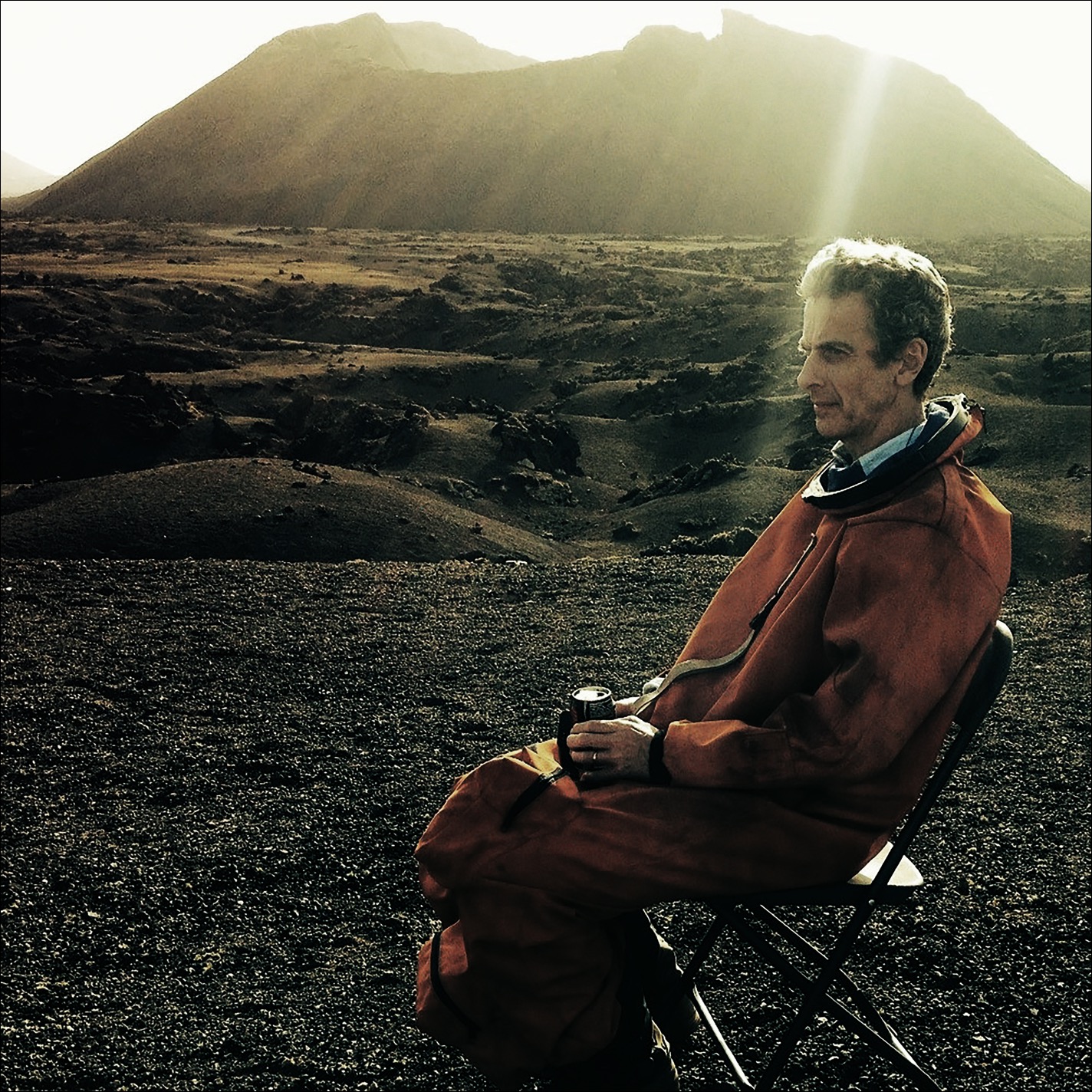
Paul Wilmshurst’s direction is exemplary. He makes stunning use of the Lanzarote location as the lunar surface, and will doubtless traumatise a fair few youngsters with those vicious, screaming spiders. More from him please. New writer Peter Harness is also a real find, deftly handling scary and weighty with enough room for a joke about tumblr which other writers may have made into purest driven cheese.
MUMMY ON THE ORIENT EXPRESS

DEN OF GEEK
Returning director Paul Wilmshurst then blends all this together with the skill and eye that helped make Kill The Moon such a visual feast, and an excellent slice of horror. Last week, then, he paid homage to the earlier Alien films. This time, it's a classic horror character who gets taken elsewhere in the universe. Wilmshurst gets his money's worth out of him. Given that the episode's jumps hinged on a CG character, we were genuinely surprised how strong the Mummy was (take the moment where he steps through Capaldi for a start). Observing the rules of effective horror critters - slow moving, unstoppable, capable of generating a jump, looks good in 1080p - the Mummy here may not crawl under the skin of too many adults, but the younger audience? They might just have hidden their eyes for a moment or two.
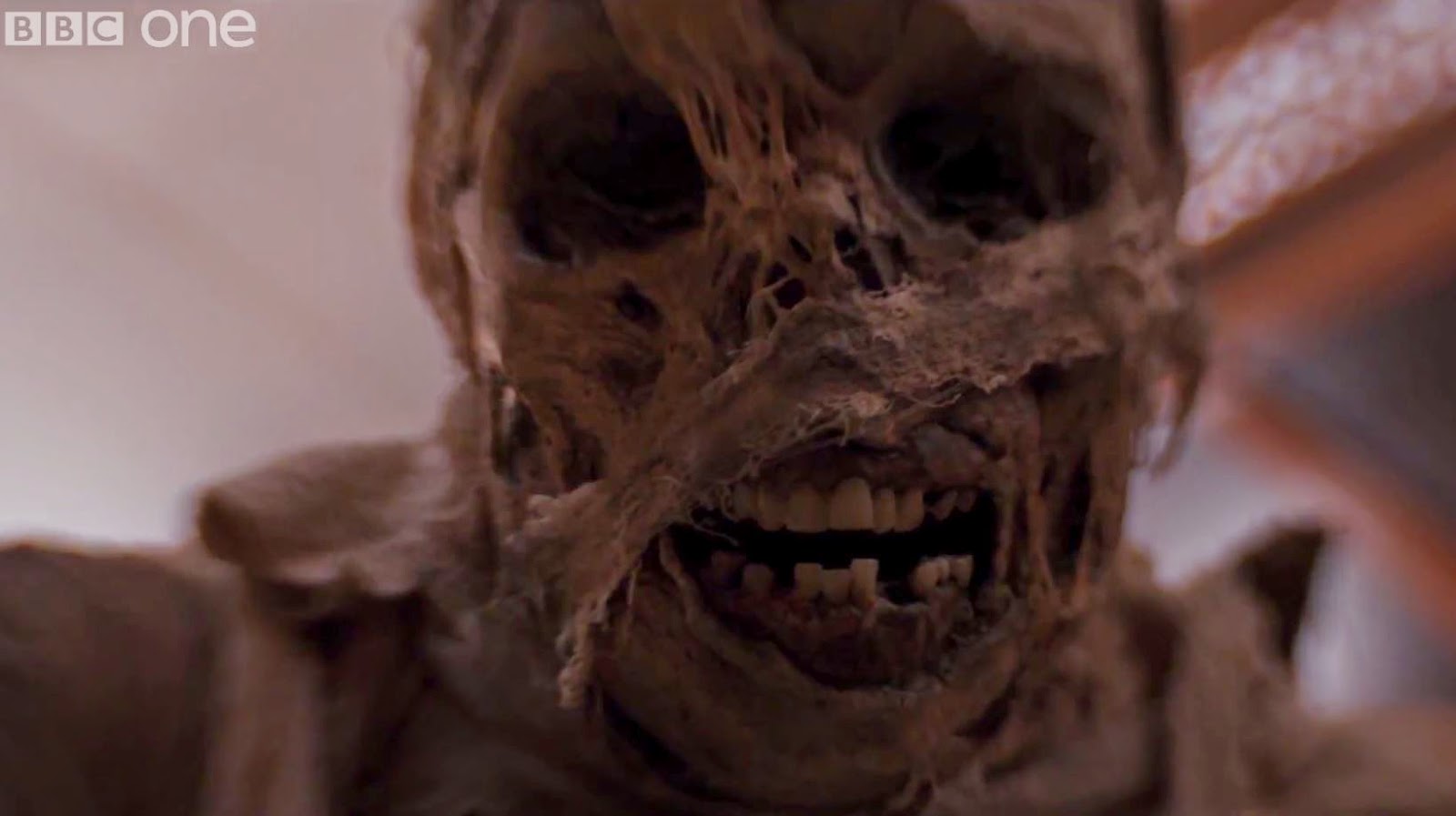
THE HOLLYWOOD NEWS
This episode was an impressive debut for Jamie Mathieson and Paul Wilmshurst’s amazing directorial skills. After Kill The Moon, Wilmshurst manages to create a beautifully retro-interior and that genius on-screen death clock (not to mention the horrifying Mummy). Frank Skinner provides an amusing performance as Perkins, an ever-so-slightly bland mechanic who seemingly matches Doctor in terms of technical know-how. Although this isn’t a huge element of the episode, Skinner plays his part well enough to justify his role as The Doctors short-term buddy and honorary companion. Other episode highlights include references to Jelly babies and a hilarious ‘Are you my Mummy?‘ moment, as well as Foxes’ atmospheric rendition of ‘Don’t Stop Me Now’.
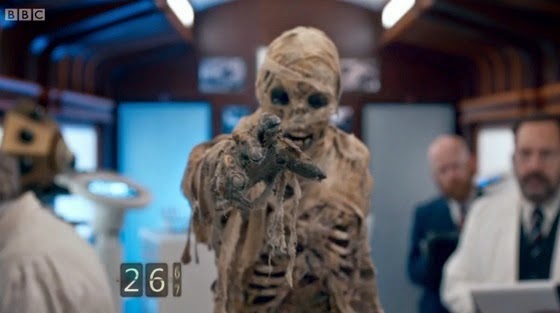
DEN OF GEEK
Penned by Jamie Mathieson, making his Doctor Who debut, Mummy On The Orient Express thus mixes in solid ingredients. There's an Agatha Christie-esque mystery, with a bunch of passengers who get drawn into what's going on. It also has a play with the Universal horror movies of old - as does director Paul Wilmshurst, who we're coming to shortly - with the Mummy itself a really convincing and impressive creation. And it chucks in Frank Skinner, playing, well, Frank Skinner in a hat, for good measure. There's a song from Foxes at the start too, for people who like songs from Foxes.
Mummy On The Orient Express works ... as a good, mainly standalone episode of Doctor Who. It's one that could have easily sat earlier in the run as here quite happily enough, but that's no problem. Capaldi holds this one together, and the main guest star, the aforementioned (Frank) Skinner, isn't likely to trouble the BAFTAs, but is clearly part of the fun.
One person who should trouble the BAFTAs though is Paul Wilmshurst. Doctor Who series 8 hasn't been shy of very strong directors, but his work in this episode and Kill The Moon is of real merit. Mark him as a name to watch, because all the signs are there that he has a good feature or two in his future. More from him in Who as well please.
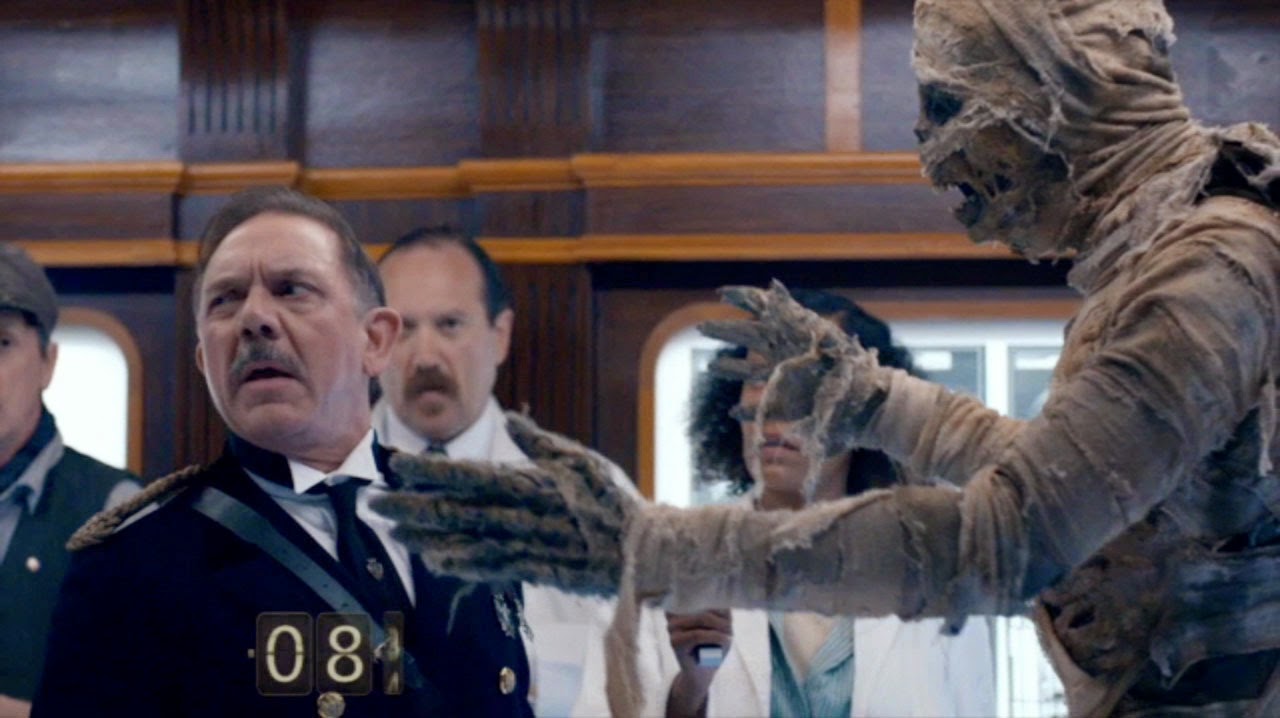
THE SKARO REVIEW
Yes! Yes! Yes!! YES!!! I’ll cut to the chase. Mummy on the Orient Express is superb. It is, easily, without a doubt, head and shoulders above anything this season has offered so far.
This, to me, is the story we’ve been waiting for Peter Capaldi to have. Fully formed, the Twelfth Doctor is a bombastic, infuriating, arrogant, charming, scatterbrained, dark and manic man of action as he takes charge of the situation with absolute ease, despite getting the psychic paper a little wrong and having the “stupid” sonic go on the blink. He even talks to himself, literally, with a fabulous little cameo of sorts which will make you punch the air. And, whisper it, the jelly babies are back!
Director Paul Wilmshurst continues his cinematic vision of Doctor Who and is a revelation in what is a pretty restrictive set, but one thing I hadn’t noticed last week but which holds true then as well as now, is that he gets honest and realistic performances from all the cast. Everyone comes across as real, but the focus is most definitely on the Doctor, and Peter Capaldi chews it up.
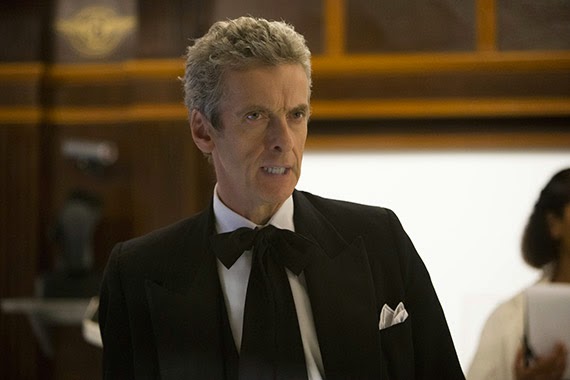
SCIFI BULLETIN
... the mummy itself is definitely one of the more frightening creations of the revamped show – the Holmes/Hinchcliffe era may have borrowed some of the tropes from the Universal movies, but this is an out and out attempt to emulate that terror which Paul Wilmshurst directs with some clever visual flourishes.

DOCTORWHO-ONLINE
Let’s start on the design for this serial, because it really is one of the strongest of the season so far. The various production departments have really gone all-out to recreate the look and feel of the Orient Express in the 1920s, from costumes to the train carriages themselves. There was always a risk that a story set in such a confined location as a train would end up lacking the visual impact of something like Robot of Sherwood, or Kill the Moon, but Mummy on the Orient Express really holds its own. Director Paul Wilmshurst returns for a second outing on Doctor Who - having made his debut last week - and again proves himself to be one of the programme’s strongest current directors. I’d wager that there’ll be a few kids having nightmares about the mummy stalking towards them, one foot dragging along the floor…
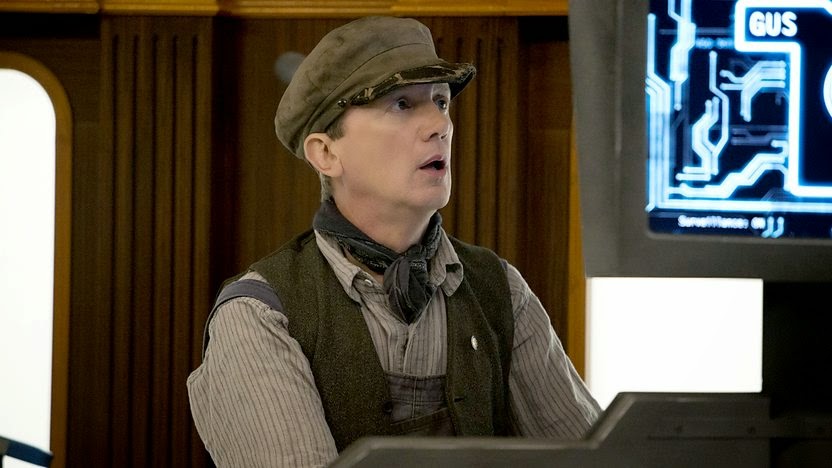
BLOGTOR WHO
Director Paul Wilmshurst, who performed such sterling cinematic work on the previous episode, continues his hot streak with Mummy on the Orient Express.
The titular creature, known as The Foretold, is immense; its design and execution flawless (perhaps maybe too much for some younger viewers). Wilmshurst's camera enhances the true terror and hair-raising horror going on in the adventure.
Each death scene is one to savour; taught, tense and terrifying. In terms of chills, this director is currently Who's best at that multiplying them.
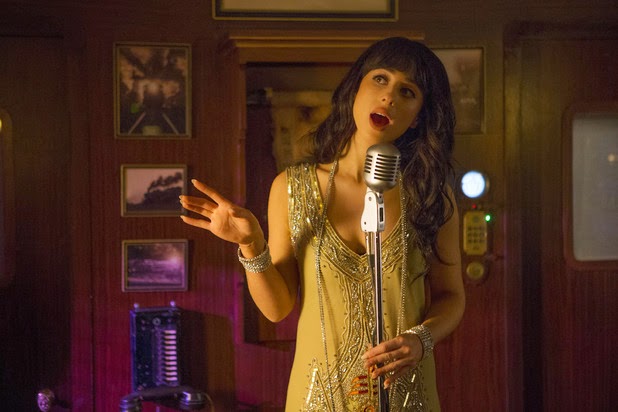
TWITCHFILM
Peter Capaldi and Jenna Coleman continue to knock it out of the park performance-wise, really showing what it takes to make that dynamic between the Doctor and his companion work. This episode is also bursting with great guest actors too, as a couple of recognisable faces show up on this hellish train journey. "Mummy" is well-directed by Paul Wilmshurst, constantly finding ways of upping the claustrophobia factor in what is becoming something of a trend for this series of the show.
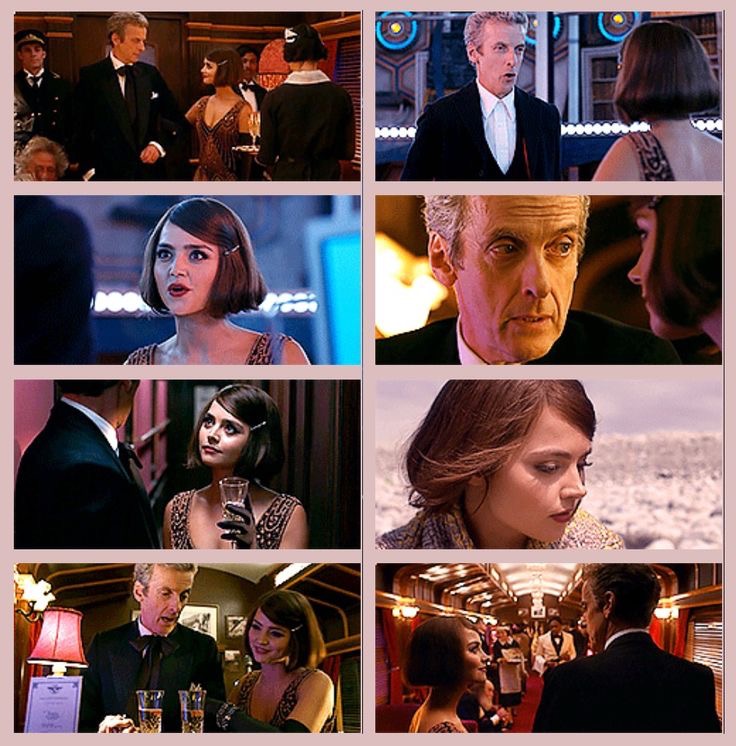
SLANT
The episode certainly brings the suspense, with the inexorable advance of the mummy being chilling every time it occurs, even though essentially the same set piece is repeated a half-dozen times. From the time the creature appears to the victim's inevitable death is exactly 66 seconds each time, with a ticking countdown clock superimposed on screen. It's a stylish touch from director Paul Wilmshurst, as is one especially spooky shot of the "out of phase" mummy walking straight through the Doctor, with its outstretched hand appearing to emerge from his eyes.

LAST CHRISTMAS
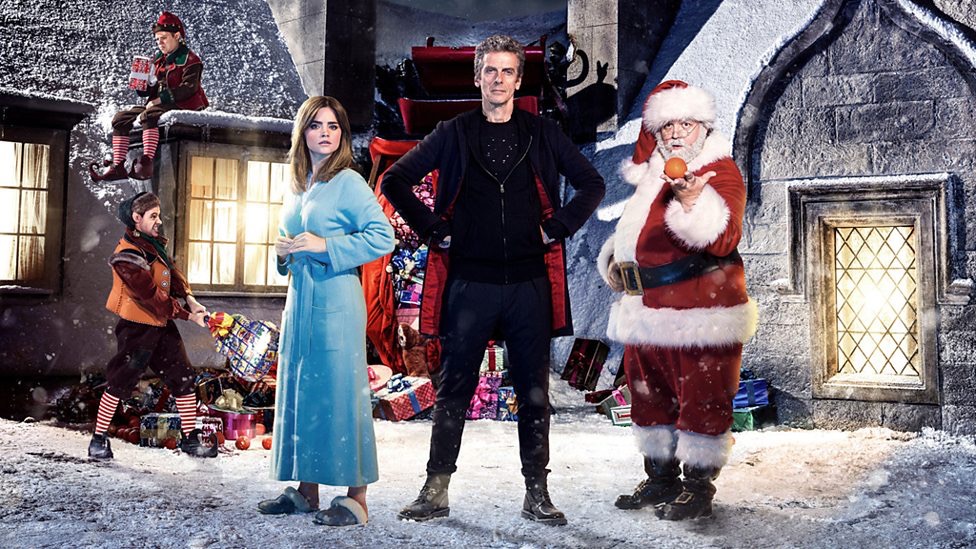
AV CLUB
The simplest way to describe “Last Christmas” is that it’s a terrifically scary Doctor Who thriller that thinks — more to the point, wants its audience to think — that it’s a whimsical, even throwaway Christmas special. In the jolly figure of Santa Claus and the rather more caustic figures of his two elves, this special tosses out festive frivolity to match anything on display in previous Steven Moffat Christmas stories like the great “A Christmas Carol” or the distinctly less great “The Doctor, The Widow, And The Wardrobe.” But those elements are, as we learn, only there to run interference for a story that recalls the terrors of Alien — a deeply offensive title, as the Doctor points out — and all the Doctor Who stories it helped inspire, including “Midnight,” “The Waters Of Mars,” and “The Time Of Angels”/“Flesh And Stone.” And, on either side of all those seemingly endless layers of dreams, “Last Christmas” offers a pair of crucial character scenes to serve as codas to the recent season: the innermost fantasy sequence between Clara and Danny and the reunion in reality between the Doctor and Clara. The cumulative result is one of Doctor Who’s very best Christmas specials.
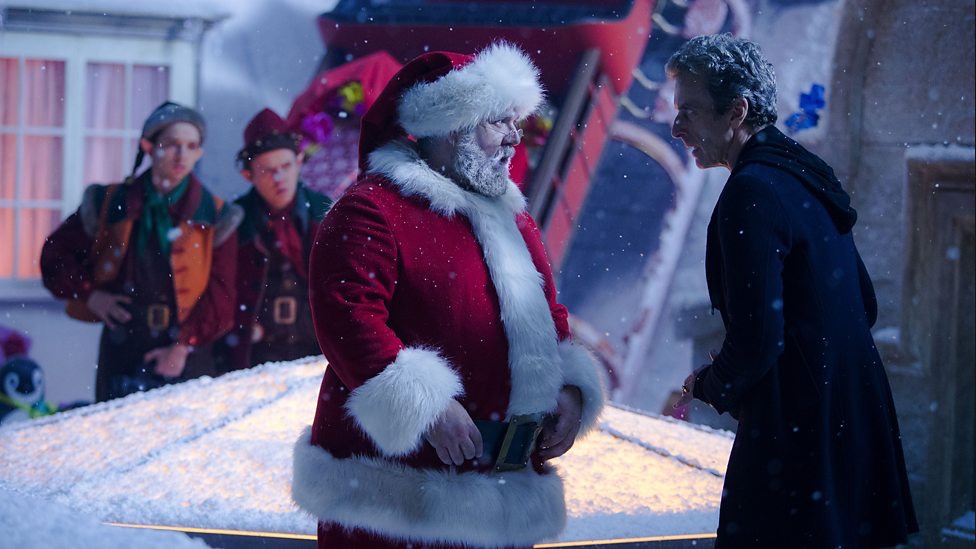
DEN OF GEEK
It's a rather scary one for Christmas day, too (well, not just for Christmas day). Certainly, there's enough in Last Christmas to put the frighteners up one or two younger viewers in particular. That said, the monsters here felt familiar, even if we've not seen them before. Don't think about them, don't look at them? They sounded a bit holding-your-breath-whilst-not-blinking-esque-critters, but the Dream Crabs also owed an ultimately overtly acknowledged debt to the xenomorphs of those Alien movies. Earlier this year, Kill The Moon paid a homage of sorts to the films, but here, Alien is addressed by name. Not that it needed to be: the close up monster with the drool coming from its mouth more than did the job of putting it in our minds.
Director Paul Wilmshurst, one of the stand-out stars of Doctor Who series 8, clearly loves this kind of material too. Accompanied by a strong Murray Gold score he tightened the screws, upped the tension, and even managed to make a simple chalkboard responsible for one of the episode's most creepy effects. He does detail exceptionally well.
The main guest star this Christmas - getting his name in the festive credits - was Nick Frost, who proved a rather excellent Santa (if less effective when doing an impression of Peter Capaldi!). Frost's controlled performance had warmth and measure, leaving enough mystery to help make him key to the episode's resolution. His sleigh looked a bit of a bumpy ride, but he gave it his all to convince us Santa is very much real. Maybe a standalone Santa movie is in his Christmas future.
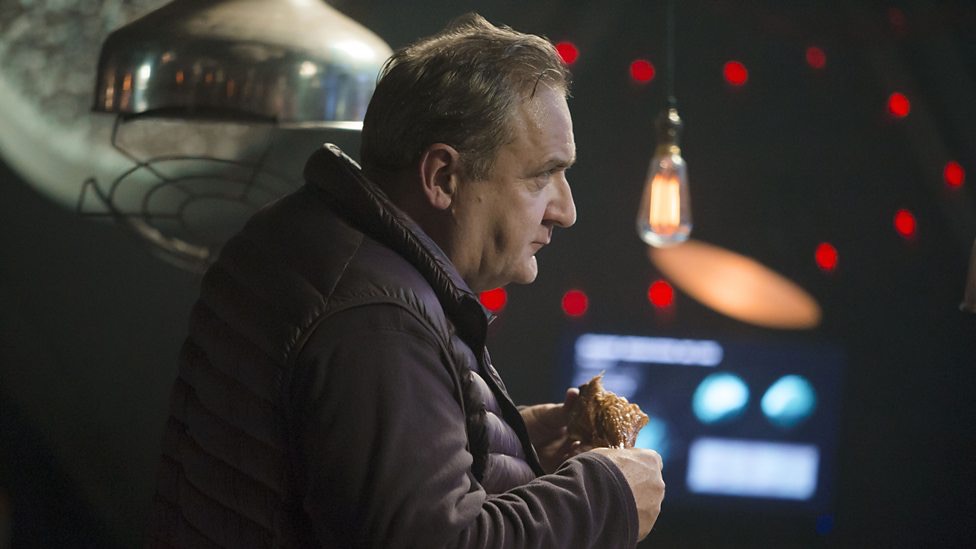
THE GUARDIAN
This one played to the show’s claustrophobic strengths – a remote base-under-siege adventure turned out to be something even smaller than that, a story that took place only in the imaginations of its protagonists. Steven Moffat’s Doctor Who has already told us not to blink, breathe or turn around – and with “think” now added to the list, we’re fast running out of things we actually can do without facing certain death. But the dream crabs were marvellously effective. For all the psychological chills, this was also the most Christmassy Christmas special they’ve ever done.
The tacit admission that the dream crab’s design was sort-of ripped off from the facehuggers in Alien allowed for an excellent one-liner: “There’s a horror movie called Alien? No wonder people keep invading you.” But it didn’t stop them being one of the scariest creations in recent years. Moffat’s psychological tricks – a telepathic mind pirate who can only see you if you can see it, and kills you while you’re dreaming – are always effective. But props to the design department for creating something that genuinely had me covering my eyes. Meanwhile, I’ll probably never look at a chalkboard in the same way again.
Yes, as well as being the most Christmassy, Last Christmas is hands down the scariest festive special Who has ever done.
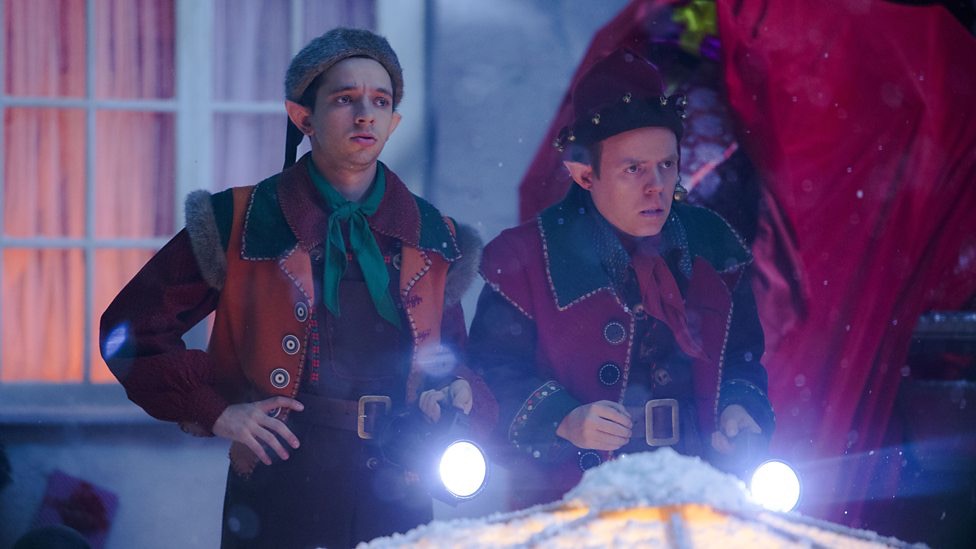
WIRED
In one of Steven Moffat's best scripts for the series since.... well, ever, probably, The Doctor and Clara are reunited after their awkward parting at the end of Death in Heaven. The method of their reunion is a strange one though -- Clara woken by Father Christmas (Nick Frost) and his elves Wolf (Nathan McMullen, best known as Finn on Misfits) and Ian (Dan Starkey, a Who regular as Sontaran soldier Strax), before being ferried away by the Doctor.
After insisting she doesn't speak, he takes her to an arctic research station. Why? It's a long story -- one of many long stories claimed by the base's inhabitants, all brushed over with pointedly fuzzy logic. Swept up in the usual nightmare scenarios that travelling with the Doctor entails, we find the survivors are trying to save four colleagues, all in a kind of enforced coma after waking Dream Crabs, alien parasites trapped dormant in the ice for untold ages.
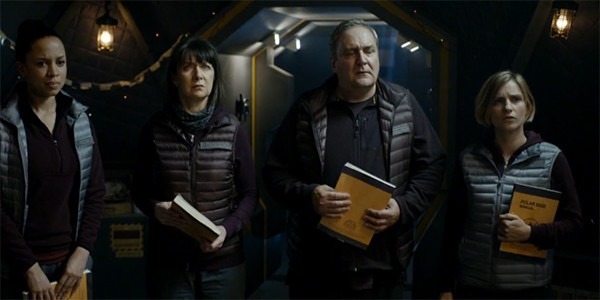
It's all a bit Lovecraftian, with things unknown from times long forgotten affecting the subconscious mind of modern man, but with the monsters fully encasing the head of their victims, the easier reference to find is the Facehuggers in Alien. So easy, in fact, that Moffat has a character (Professor Albert, played by Michael Troughton, son of Second Doctor Patrick Troughton) make the comment first.
Regardless of their inspiration, the Crabs themselves are one of the more disturbing creatures in Who lore, and one of the relatively rare breed that are forces of nature rather than outright evil. Once they latch on to a host, they anaesthetise victims with pleasant dreams while their brains are liquefied. A grisly fate to be sure, but one born of a biological imperative, rather than extravagant plans to take over or destroy the Earth.For so masterfully manipulating the viewers' understanding of what was and was not real, and for being merry without being (too) mawkish, Last Christmas stands as one of -- potentially the -- best holiday special Doctor Who has managed. A real festive treat.
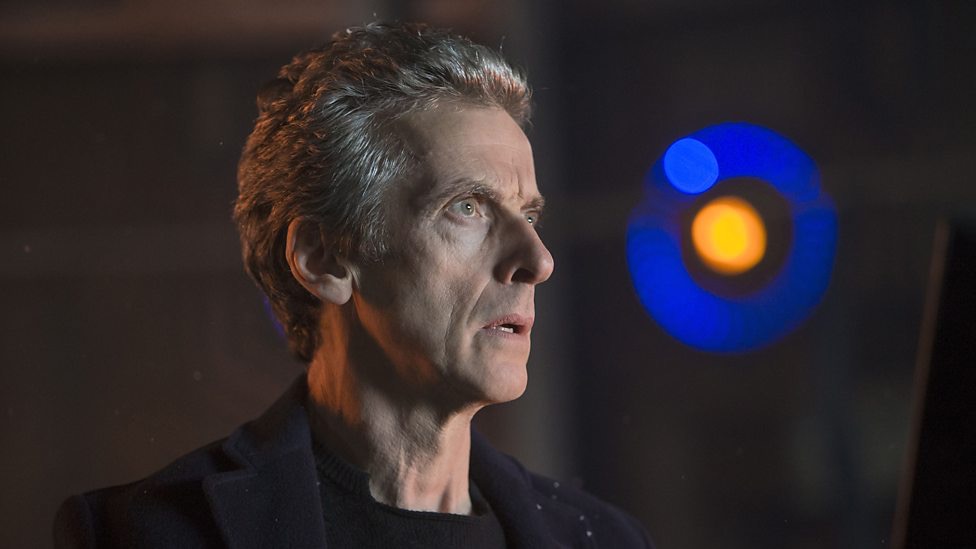
DIGITAL SPY
'Last Christmas' is an absolute cracker - pun fully intended. The festive fun factor is high, as is only right and proper, but it's often been said that Doctor Who is at its best when its roots are showing and here Moffat apes both Christopher Nolan's Inception and Ridley Scott's Alien to provide the viewer with both food for thought and fuel for our nightmares.
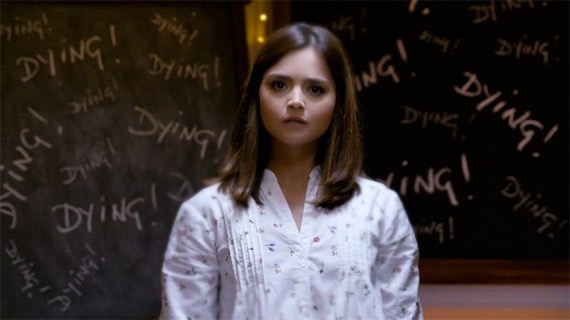
IGN
It's unsurprising but no less impressive that director Paul Wilmshurst managed to strike a tone thus far unmatched in the world of modern Who Christmas adventures. Wilmshurst - who previously cut his teeth on horror/sci-fi mash-ups 'Kill The Moon' and 'Mummy On The Orient Express' - crafted a romp as comfortable in its slapstick Santa gags as its body-horror claustrophobia.
Part The Thing, part Inception and a rather substantial bit Alien (hey, at least Moffat's script was knowing enough to call itself out on it), 'Last Christmas' aptly blended horrendous visuals and mental trauma with ho ho jolly silliness, and somehow managed to pull the whole preposterous tonal affair off.
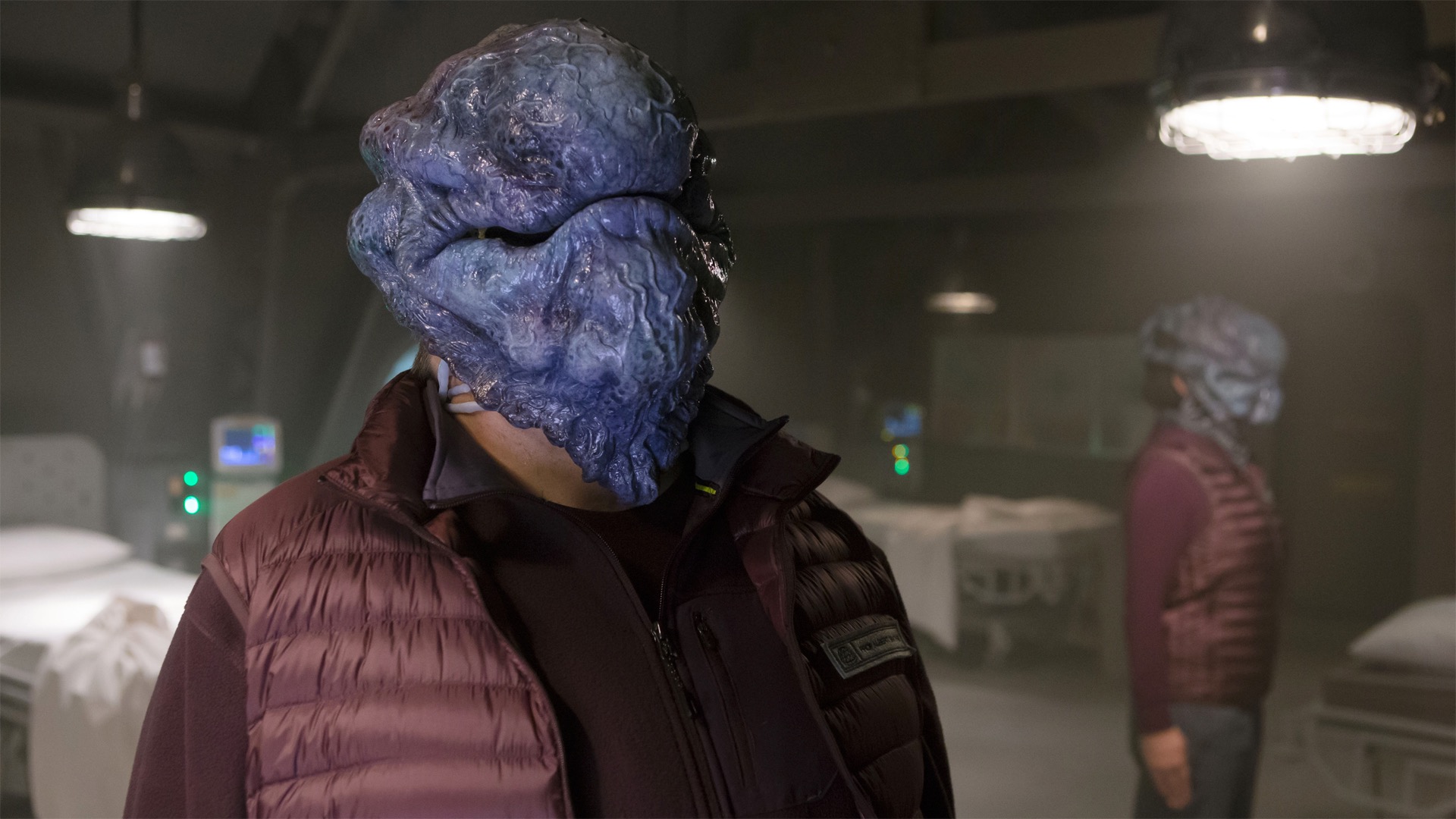
Fair credit should go to its supporting cast, with Nick Frost's entertainingly competitive, self-referential Santa Claus acting as an amusing foil to the ever-great, cynical Faye Marsay (if you've ever wanted to see a gobby Northern, pseudo-Ripley boogie-woogie her way through a nest of facehuggers, then 'Last Christmas' is the episode for you).
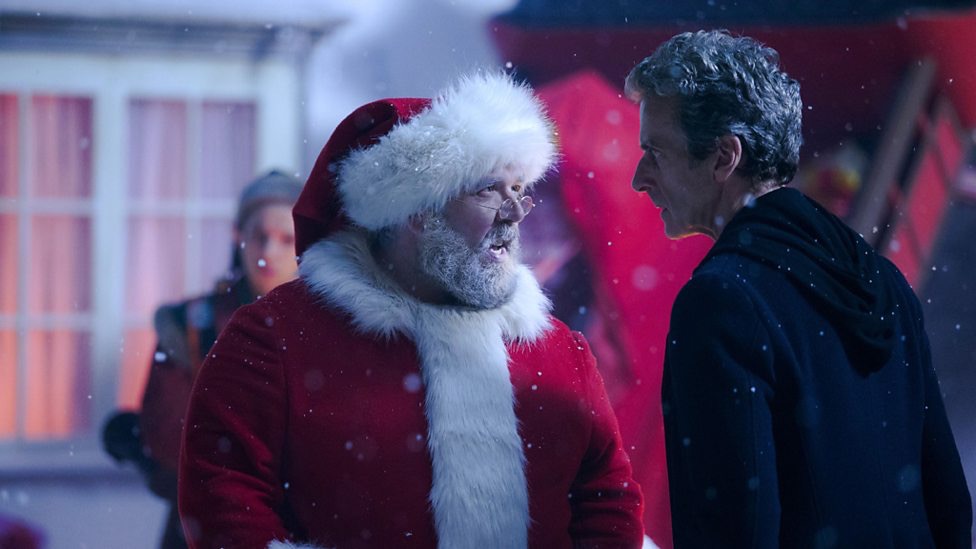
RADIO TIMES
The production is lusciously directed by Paul Wilmshurst (who also helmed this year’s Kill the Moon and Mummy of the Orient Express). The CGI is magnificent: the sleigh ride across the London night sky may be the showpiece, but the sweeping shot towards the Arctic base is also very beautiful.
